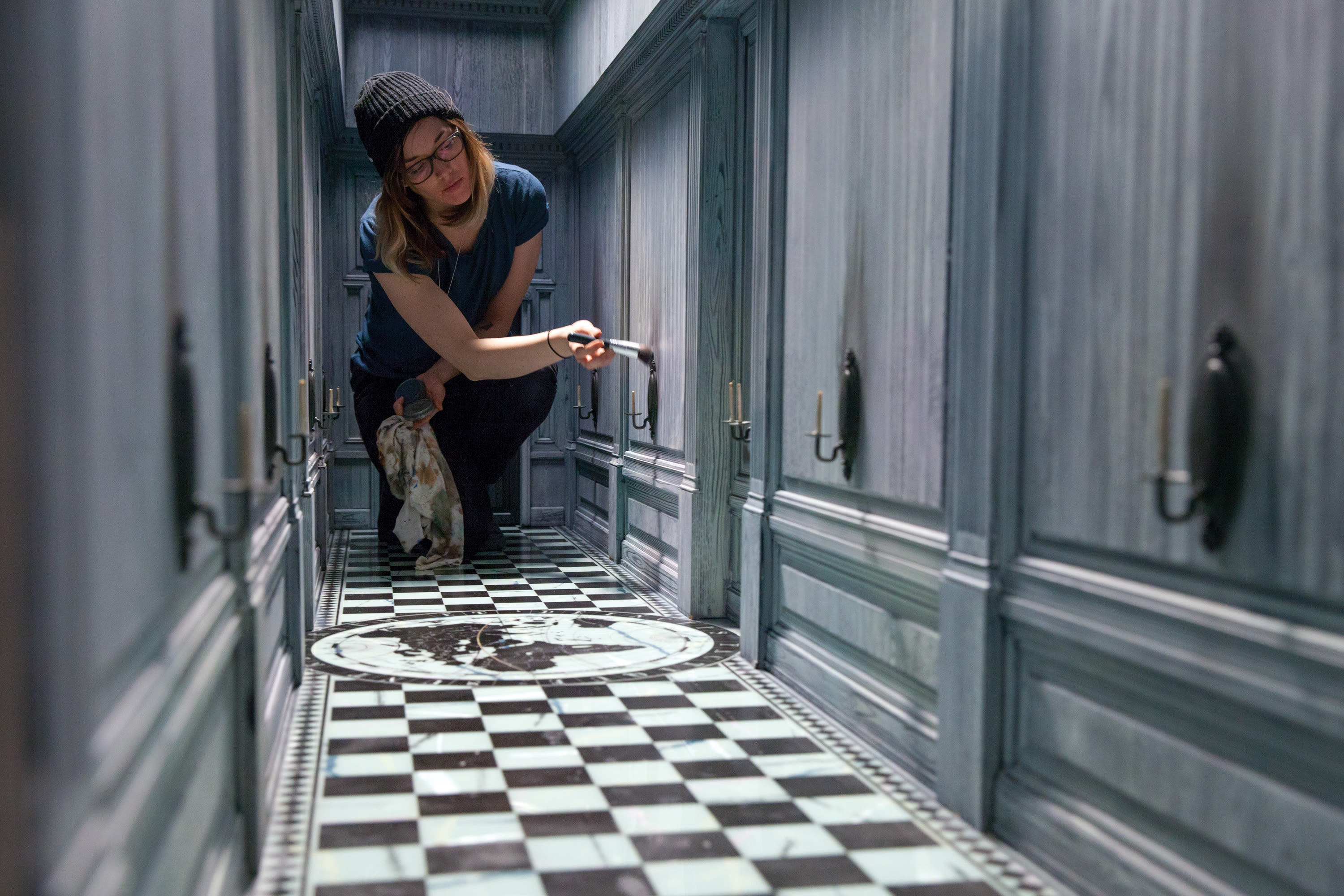
How Portland Became a World Leader in Stop-Motion Animation
Our Chicken Runs, our Wallace and Gromits, our Nightmare Before Christmases—we owe gratitude to the painstaking work of too many artists to name for each of them. If we wanted to concentrate that gratitude, though, we’d probably direct it at someone who didn’t touch those films at all: a balding, mustachioed McMinnville native who lost his animation empire to a white rapper named Chilly Tee.
Will Vinton, one of the most influential and prolific animators of the 20th century, started producing stop-motion work in Portland in the 1970s. Since then, our city’s profile has ballooned, and we’ve become a world leader in the craft—Vinton’s studio begat Laika, which remains Portland’s animation calling card, netting a Golden Globe, a BAFTA, and six Oscar nominations, but a slew of other studios and major projects have come down the pipeline in recent years.

Image: Courtesy Laika
“Three feature [stop-motion] films in production at the same time in the same city has never happened before. Not anywhere,” says Laika animation supervisor Brad Schiff. But right now, it’s happening in Portland.
Vinton was born in Yamhill County in 1947, the son of a car dealer and a bookkeeper. Three decades later, he would coin the term “claymation” while filming a behind-the-scenes documentary about his already-prolific output. He was hardly the first person to mold figures and photograph them, frame by frame, to create the cheap and uncanny illusion of them moving on their own. That honor goes to Brits J. Stuart Blackton and Albert E. Smith, who released The Humpty Dumpty Circus at the turn of the 20th century. (The term “stop-motion” probably dates back to 1917 and the work of New York artist Helena Smith-Dayton.)
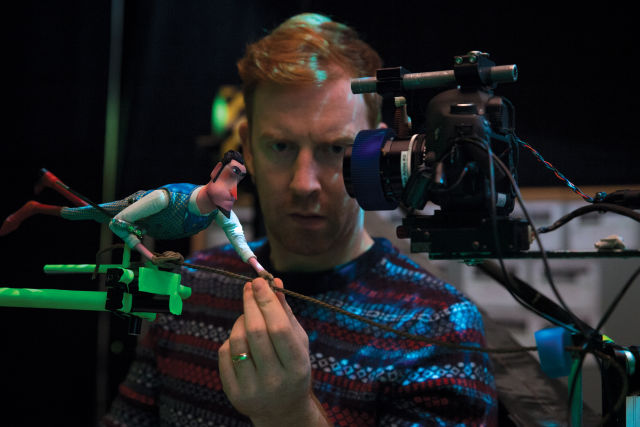
Image: Courtesy Laika
But in 1975, Vinton’s film Closed Mondays—a hallucinatory eight-minute trek through an art gallery come to life—snagged the Oscar for best animated short, despite being rejected on the local festival circuit. It was the first stop-motion film to win an Academy Award, and it remains the only film produced in Portland to do so. Following its success, Vinton, who had studied architecture at Berkeley, became the most famous stop-motion artist in the world, creating iconic characters like the California Raisins and the anthropomorphic M&Ms by hand in his Portland studio.
“There are all these threads that connect back to how the animation scene became what it is here in Portland, and the roads seem to all converge back to Will Vinton,” says Jennifer Ely, an Indiana native and former Laika intern who’s made a career freelancing in Portland’s animation scene and beyond. “When he passed away [in 2018], there was absolutely a bowed heads, let’s-all-say-a-little-something kind of thing.... He’s still very much in the blood of this place.”
Vinton eventually lost his own studio to Nike cofounder Phil Knight—the story is long and contentious, but the gist is that Knight invested in the company, bought it from Vinton, and appointed his son Travis (who had once been Vinton’s intern and occasionally rapped under the name “Chilly Tee”) as president. Under the Knights and their supervising director Henry Selick (the Tim Burton collaborator who had directed The Nightmare Before Christmas and James and the Giant Peach), Laika was born in the early 2000s, based in Hillsboro and operating two divisions: Laika Studios for features, and Laika/house for commercial work. Its name came from the dog who orbited Earth in Soviet spacecraft Sputnik 2, and its inaugural feature film was 2009’s Coraline, the critically beloved, absolutely terrifying adaptation of Neil Gaiman’s children’s horror novella.
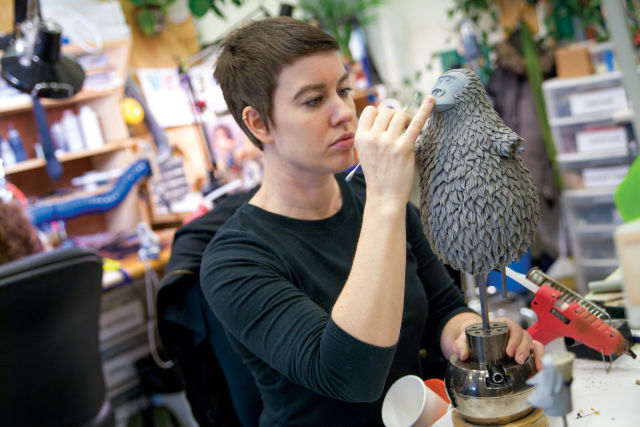
Image: Courtesy Laika
Ely came to Laika after studying illustration at Georgia’s Savannah College of Art and Design because, she says, “I was in love with Coraline.” She had already finished a mentorship at DreamWorks in Los Angeles, but it didn’t suit her sensibility. “[My boss] said, ‘We don’t really use black,’ but I love using black,” Ely explains. “I love weirder things and darker things, and I think that’s one of the differences between up here and some one of the bigger studios in LA. We make more independent things, things that aren’t as clear-cut, happy, upbeat.”
After her Laika internship, Ely wasn’t sure where she would land to start stringing together a full-fledged animation career. DreamWorks recruited her for a job on The Adventures of Puss in Boots up in Vancouver, British Columbia, and she lasted eight months before returning to Portland, citing creative differences. She’s been here ever since.
“People work [in Portland] not to make a billion dollars, but because they really love this kind of work,” she says. “As much as there’s this weird phrasing that gets tossed around a lot, this ‘ragtag band of weirdos,’ on a base level there is some truth in that.”
The world beyond Laika is starting to catch on. “Everybody [in Portland] has huge pockets of time where they’re unemployed,” says Ely, creating a stagnant talent pool of highly skilled animators twiddling their thumbs and driving for Lyft, waiting for their next gig. Rather than pay to ship those animators to other cities, the studios are finally coming to us.
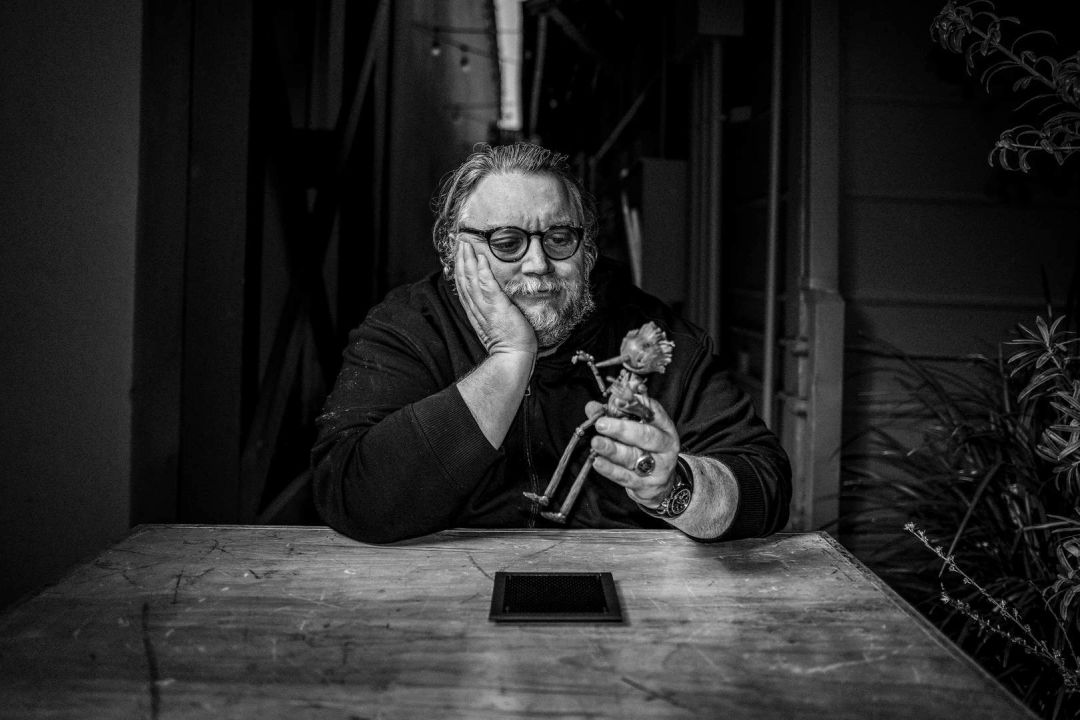
Guillermo del Toro with a figuringe from his upcoming stop-motion Pinocchio which ShadowMachine is producing in Portland.
Image: Courtesy ShadowMachine
Right now, aside from Laika’s under-wraps upcoming project, Netflix has two major stop-motion features in production in Portland: Guillermo del Toro’s Pinocchio and Selick’s Wendell and Wild, cocreated with Keegan-Michael Key and Jordan Peele. It seems Selick—who left Laika in 2009—learned his lesson after Cinderbiter Productions, the stop-motion studio he spun off from Pixar in San Francisco, collapsed in 2012 due to budget overruns.
“When you look at the worldwide community of animation, Portland is not just on the map. It’s one of the leaders,” says Alex Bulkley, cofounder of Los Angeles–based animation studio ShadowMachine. Bulkley started the company in 1999 with his friend Corey Campodonico, and the pair struck gold almost immediately with Robot Chicken, a short-form Adult Swim stop-motion show that’s snagged six Emmys in its 200-episode run. Riding Robot’s success, they popped out several shorter-lived but also-potent Adult Swim projects, and gradually helped define the late-night programming block’s DIY aesthetic and left-field sensibility.
In 2015, as ShadowMachine’s BoJack Horseman was starting to gather significant critical acclaim, Bulkley and Campodonico went scouting for a second studio. They looked nationally and internationally, vetting other animation-heavy cities like Seoul and Dublin, before landing on PDX.
“We’d always known there was a really strong stop-motion talent pool in the Northwest, and as we started doing more stop-motion up here, I think we underestimated just how strong that talent pool was. Arguably the best in the world,” Bulkley says. “It’s a great West Coast city with access to everything, but it’s not big in the same way that New York or Los Angeles or Chicago is. There’s an intimacy and, for lack of a better term, incestuousness to it that allows people to grow together.”
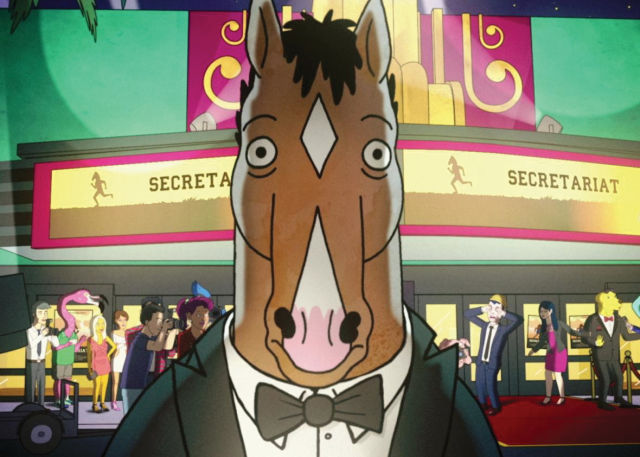
A still from the opening credits of the television series BoJack Horseman, on of ShadowMachine's flagship production at its Los Angeles studio.
Image: Courtesy ShadowMachine
After moving to Portland, Bulkley got to work on ShadowMachine’s inaugural Northwest project: a 2-D sitcom called Jeff and Some Aliens for Comedy Central. Subsequent projects included a few Honda commercials and the stop-motion sequence in 2019’s Booksmart where Kaitlyn Dever and Beanie Feldstein become Barbie dolls. Now, they’ve been tapped by Netflix and del Toro to produce Pinocchio, which is shrouded in secrecy and scheduled to come out sometime next year. Its profile can hardly be overstated: the voice cast includes Cate Blanchett, Ewan McGregor, and Christoph Waltz.
Bulkley says he and his team have hardly felt the effects of COVID in production. Ely is the color designer for Pinocchio, and says though there was some initial tension, it’s mostly been smoothed over: people make pieces in their homes and hand them off, whoever can work from their own computer does, and the physical stages used for filming are regularly cleaned.
In the face of a highly transmittable virus, might animation be some sort of white knight for the film industry at large? Probably not, say Ely and Bulkley, but interest is certainly up. There are practical barriers—it takes time and talent—plus the simple reality that, malleable though it may be, it’s not perfectly suited for every type of story. For now, though, it’s hard for Portland animators to look too far ahead, given how full their plates are.
If these projects are a success, we could see the trend line jump even higher in the coming years. Schiff, Laika’s animation supervisor, says we’re right to thank Will Vinton for setting us up the way he did, but his theory for our outsized industry presence is more elemental. “While the process of filmmaking is collaborative, the act of animating is solitary,” he says. “And when it’s raining, which it does a lot here, there’s nothing I’d rather be doing than being inside creating art.”




